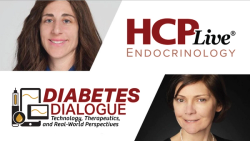
OR WAIT null SECS
Reducing Costs of SGLT2 Inhibitors, GLP1 RAs May Improve Diabetes Outcomes
Both drug classes would improve type 2 diabetes outcomes as first-line agents, but costs would be need to be reduced by at least 70% to be considered cost-effective.
New findings suggest both sodium-glucose cotransporter-2 (SGLT2) inhibitors and glucagon-like peptide-1 receptor agonists (GLP1 RA) are potentially effective first-line agents in the treatment of type 2 diabetes (T2D), but the drug classes are not cost-effective at their current price.
According to the study model, the agents were projected to improve life expectancy by 3.0 months to 3.4 months. However, a price reduction of 70% for SGLT2 inhibitors and 90% for oral GLP1 RA would be required to become cost-effective at a willingness-to-pay threshold of $150,000 per quality-adjusted life year (QALY).
“In the interest of improving access to high-quality care in the United States, our study results indicate the need to reduce SGLT2 inhibitor and GLP1 receptor agonist medication costs substantially for patients with T2D to improve health outcomes and prevent exacerbating diabetes health disparities,” wrote study author Neda Laiteerapong, MD, MS, University of Chicago.
Based on large, randomized trial data suggesting their efficacy, guidelines from the American Diabetes Association (ADA) and European Association for the Study of Diabetes (EASD) recommend the study agents as second-line therapy in patients with T2D without atherosclerotic cardiovascular disease (ASCVD) and first-line therapy with metformin for patients with coexistent ASCVD, heart failure, or chronic kidney disease.
Some clinicians have supported their use as first-line therapy (before metformin) in high-risk populations and ongoing investigations on safety suggest that some SGLT2 inhibitors may reduce heart failure admissions without metformin. However, their costs are hundreds of times more expensive compared to other oral diabetes drugs, leading ADA guidelines to not recommend either agent as second-line therapy “if cost is a major issue.”
Laiteerapong and colleagues evaluated the cost-effectiveness of SGLT2 inhibitors and GLP1 receptor agonists as first-line therapies for patients with T2D in the US, compared with metformin as first-line therapy, using an individual-level Monte Carlo–based Markov model. Outcome measures included life expectancy, lifetime costs, and incremental cost-effectiveness ratios (ICERs).
The population was created from a nationally representative sample of persons with diabetes eligible to start first-line therapy using participants who self-reported diabetes or had HbA1c of more than 6.5% within the National Health and Nutrition Examination Survey (NHANES).
A total of 493 participants from NHANES thus met inclusion criteria with an average age of 55 years and 50.0% female. The findings indicate first-line SGLT2 inhibitors and GLP-1 RAs had lower lifetime rates of congestive heart failure, ischemic heart disease, myocardial infarction, and stroke, compared with metformin.
However, first-line metformin had the lowest average per-person lifetime cost, while GLP1 RA had the highest, with 60 to 70% of the cost difference due to medication costs (initial metformin: $92,000 vs. $135,000 for SGLT2 inhibitor and $141,000 for GLP1 RA).
Data show the ICER of SGLT2 inhibitors was $478,000 per QALY gained compared with metformin compared with metformin. First-line injectable GLP-1 RA cost more and reduced QALYs, compared with metformin.
In order to be cost-effective at under $150,000 per QALY, the costs for SGLT2 inhibitors would need to be $5 per day ($1800 a year) and under $6 per day ($2100 a year) for oral GLP-1 RA.
Although oral GLP1 RA increased quality-adjusted life expectancy (QALE) by 3 months, it had an ICER of $823,000 per additional QALY gained versus metformin. When excluding medical disutility, both first-line SGLT2 inhibitors or GLP1 RA remained expensive with ICERs exceeding $300,000 per QALY.
"Other recently published U.S. cost-effectiveness analyses have examined drug classes rather than medication algorithms,” Laiteerapong said. “Therefore, our conclusions that SGLT2 inhibitors and GLP1 receptor agonists as first-line therapy may not be cost-effective despite improved clinical outcomes solely reflect the incremental benefit of using the newer agents as first-line agents rather than second-line, that is, a delayed use of the newer agents.”
The study, “First-Line Therapy for Type 2 Diabetes With Sodium–Glucose Cotransporter-2 Inhibitors and Glucagon-Like Peptide-1 Receptor Agonists,” was published in Annals of Internal Medicine.


